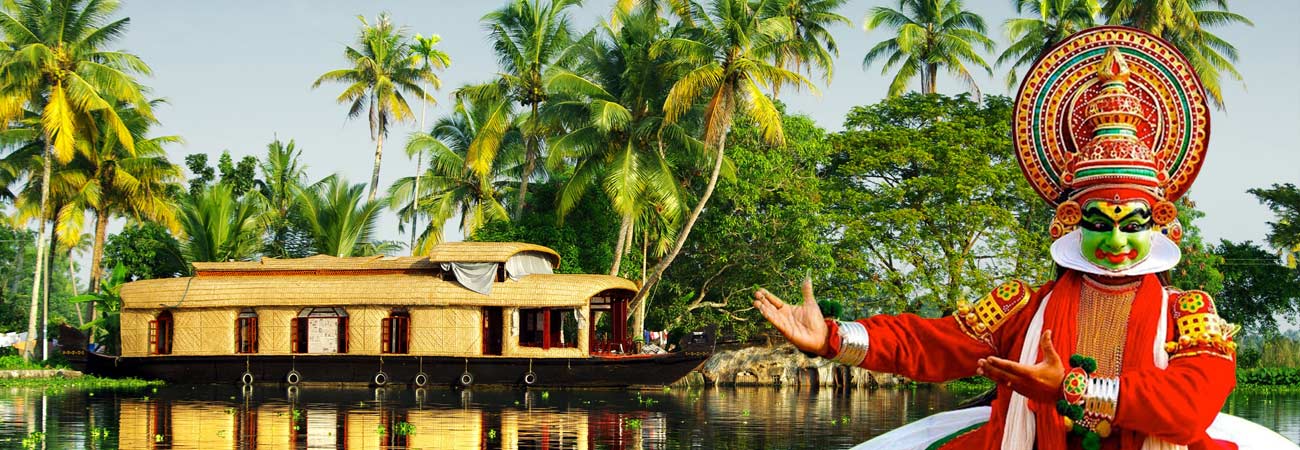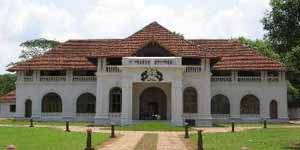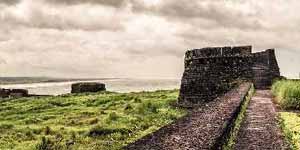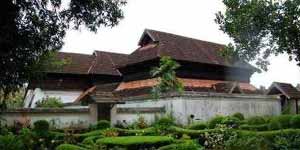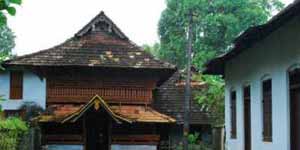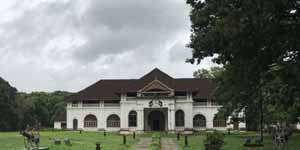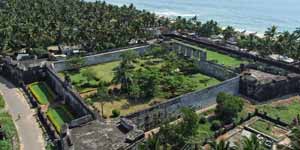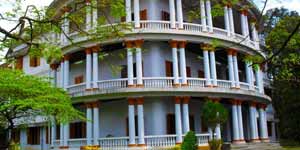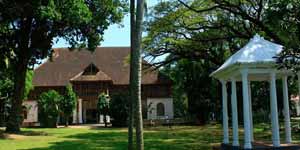
Krishnapuram Palace
The 'Gajendra Moksham' is a massive mural depicting an elephant saluting Lord Vishnu as the other Gods, Goddesses and sages look on in reverence. At 49 sq m, this largest single mural band of its kind ever found in Kerala, greets all who visit Krishnapuram Palace. It is said that Lord Vishnu was the chief deity of theerst while Kayamkulam royal family. This mural was placed at the entrance to the palace from the pond to enable the rulers to worship the deity after their bath.
The Krishnapuram Palace is a rare specimen of the Kerala style of architecture, complete with gabled roofs, narrow corridors and dormer windows. Residence of the rulers of Kayamkulam Kingdom, the age of the palace is unknown. Renovated in the 18th century, the palace is today a protected monument under the Archaeology Department. Recently it was again renovated according to the scientific techniques prescribed for the protection of heritage buildings. One can come across many rare antiques and paintings when exploring this beautiful palace.
Krishnapuram Palace is built in the conventional architectural style of Kerala with gabled low roofs, narrow corridors, thick-framed doors, and dormer windows. It is built in the Pathinaru-kettu (16 blocks) style, in which rooms are built around four inner courtyards called Nadu-muttams.
At the time when the building was occupied by the royal family, it was a large complex consisting of many units. However, most of the smaller units were later lost and now only the main structure has survived. This portion, that was modified and is now looked after by the Kerala State Department of Archaeology, is a three-storey building and houses heirlooms of the royal family and other objects of historical interest. The restored building has retained most of the palace’s original architectural style.
A major attraction in the palace interior is the 9.8’ high mural depicting the story of Gajendra-moksham, a famous story from mythology in which Lord Vishnu comes down to the earth to save an elephant who is his ardent devotee.
A double-edged sword known as Kayamkulam Vaal, a Sanskrit Bible, bronze statues, an antique Buddha of the 10th century, stone inscriptions, megalithic specimens, Pancha-loha (a combination of five metals) figurines, magnificent oil lamps, and ceremonial utensils are some of the other exhibits here.
History
The former King of the Travancore state had made this palace in the 18th century. There are many other buildings which have a perfect combination of traditional and western architecture. The present building and a three storied structure within the compound was rebuilt in the year 1950 by the Archaeological Department of the state. It was renovated in contemporary style adapting scientific methods for the protection of historical edifices. The museum is a replica of the Bible in Sanskrit printed in Kolkata in the year 1886.
Architecture and Collection
The narrow passages, low ceilings, projecting balcony windows, etc. form a splendid example of this architectural style in the palace. At present, the palace is an archaeological museum which is under the protection of Archaeological Department. Here, the mural of Gajendra Moksham, Kayamkulam sword and the statue of Buddha are the most important display among all. Gajendra Moksham mural paintings beautify the bathing house wall of the palace.
A large number of antique artifacts and historical specimens from different parts of the country are also exhibited here. One can find a huge collection of rare antique bronze sculptures, wood sculptures, coins, megalithic remains and mural paintings.
Monuments in Kerala
Monuments in Kerala is one of the most visited tourist destinations in India. The beautiful state is not only replete with natural beauty but it is the land of abundant historical attractions. During your tour to Kerala, you can explore some of the most famous historical monuments of Kerala that let you know the glorious past history of the state. The coastal state is home to diverse landmarks, architecture, and culture. The royal dynasties of Kerala, colonial Portuguese, Jews, Dutch and British have inhabited the region and have inspired many architectural marvels. Magnificent forts, palaces, architectural monuments represent the ruling dynasties and cultures that existed here. The combined history of the state is a treasure. Every monument is an insight into the charming history of God’s Own Country.

